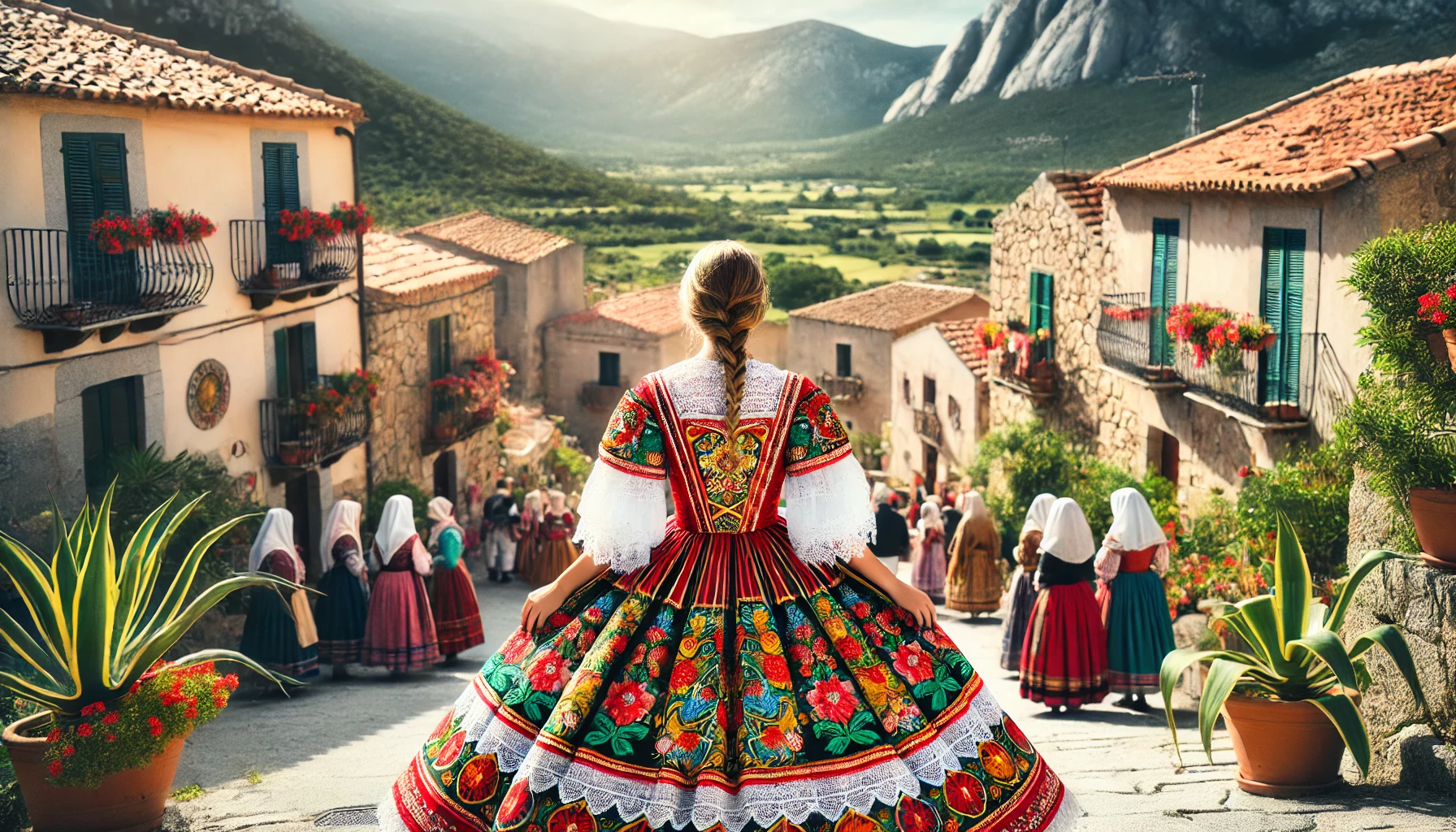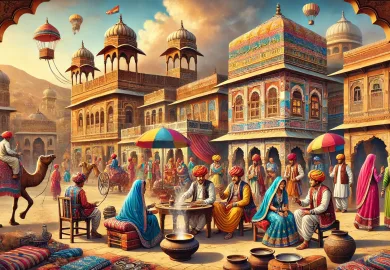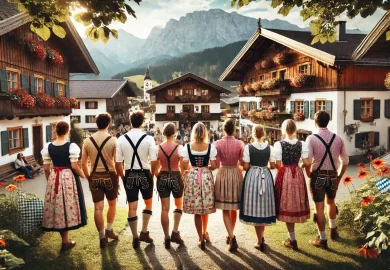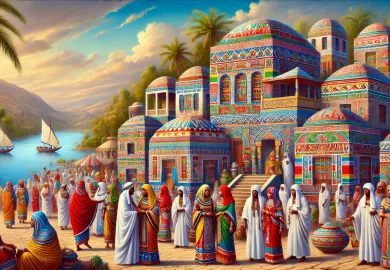
Disclaimer: This content was generated using AI. While I strive for accuracy, I encourage readers to verify important information. I use AI-generated content to increase efficiencies and to provide certain insights, but it may not reflect human expertise or opinions.
Sardinia, a picturesque island off the coast of Italy, is home to some of the most culturally rich and visually striking traditional costumes in the Mediterranean. For centuries, the island’s traditional dress has served as a symbol of its unique identity, telling stories of its history, regional diversity, and social customs. As you explore the island’s rich tapestry of clothing, you will discover that these garments are not merely attire; they represent a deeper connection to the past, a celebration of craftsmanship, and a proud preservation of cultural identity.
The Origins of Sardinian Traditional Dress: A Historical Overview
The origins of Sardinian traditional dress can be traced back to ancient times, with influences from the many civilizations that have touched the island’s shores. Sardinia’s strategic location in the Mediterranean made it a crossroads for cultures such as the Phoenicians, Carthaginians, Romans, Byzantines, and Spanish, each leaving their mark on the island’s customs, including its clothing.
The traditional Sardinian dress evolved as a reflection of the island’s geographical isolation and its exposure to these diverse influences. The garments worn by Sardinians during different historical periods were influenced by both necessity and the surrounding environment. For instance, the mountainous terrain and varying climate conditions shaped the practical aspects of the clothing, while intricate patterns and decorations emerged as expressions of local artistry.
By the 19th century, Sardinian traditional dress had taken on the forms we recognize today. The garments, often made from wool and linen, were typically handmade and featured elaborate embroidery, vibrant colors, and rich fabrics. Each region, town, and even village on the island developed its own distinct style, further emphasizing the diversity of Sardinian culture.
Regional Variations: Exploring the Different Types of Sardinian Traditional Dress
One of the most fascinating aspects of Sardinian traditional dress is the incredible variety of styles that exist across the island. Each region has its own unique version of traditional attire, with differences in color, material, and design that reflect local customs, geography, and history.
For example, in the region of Nuoro, women’s traditional dress is characterized by long, flowing skirts, heavily embroidered bodices, and headscarves, often in vibrant shades of red and green. This attire, typically worn during religious festivals, is a striking symbol of pride and elegance. The intricate embroidery on the bodices often tells stories of local folklore, making each piece not just a garment but a work of art.
In contrast, the coastal regions such as Gallura have a simpler, more subdued style of traditional dress, with white linen garments often adorned with lace and delicate trimmings. The materials used are lighter, reflecting the warmer coastal climate. This style is more minimalist in its design but still maintains the essence of Sardinian craftsmanship.
Men’s traditional attire also varies across the island. In the Barbagia region, men typically wear a long black cloak called a “berritta,” paired with a white shirt and black trousers. This austere but dignified look reflects the rugged terrain and the strong, independent character of the people from this mountainous region.
The Symbolism of Colors and Fabrics in Sardinian Traditional Dress
Colors and fabrics play a significant role in Sardinian traditional dress, often serving as symbols of social status, regional identity, and even religious significance. The choice of color in a garment can reflect everything from the wearer’s marital status to their region of origin.
Red, for instance, is a prominent color in many Sardinian costumes, especially in women’s attire. It is often associated with life, vitality, and fertility. In some areas, brides wear red during wedding ceremonies, symbolizing good fortune and a prosperous future. The use of vibrant reds in Sardinian traditional dress highlights the island’s connection to nature and its celebration of life’s important milestones.
Black is another key color, particularly in mourning attire. Sardinian widows, for example, traditionally wear black for an extended period after the death of a spouse. The deep, somber hue reflects grief and respect for the departed. In some regions, black also serves as a color of dignity and modesty, commonly seen in men’s cloaks and hats.
Fabrics are equally important in conveying social and cultural messages. Wool and linen are the most common materials used in traditional Sardinian dress, each chosen for its practicality and availability. Wool is particularly valued for its durability and warmth, especially in the cooler, mountainous areas of the island. Linen, on the other hand, is used more frequently in the coastal regions due to its lightness and breathability, perfect for the warmer climate.
The finest fabrics, such as silk and velvet, are reserved for special occasions and often indicate wealth or higher social standing. These materials are typically embellished with gold and silver thread, further elevating the garment’s status. The craftsmanship involved in creating these intricate designs is passed down through generations, ensuring that the art of Sardinian textile making continues to thrive.
Modern-Day Significance: How Sardinian Traditional Dress is Preserved Today
In the modern era, the wearing of traditional Sardinian dress has become less common in everyday life, but it remains a vital part of the island’s cultural heritage. These garments are still worn during important festivals, religious ceremonies, and public celebrations, serving as a bridge between the past and the present.
One of the most well-known events where traditional dress takes center stage is the “Sagra del Redentore” in Nuoro. This festival, held in late August, is a vibrant display of Sardinia’s rich cultural traditions. Thousands of people, dressed in traditional costumes, participate in processions, dances, and religious rituals, all while showcasing the beauty and craftsmanship of their attire. It is a time when the island’s history and traditions come alive, and younger generations have the opportunity to connect with their heritage.
In addition to festivals, efforts have been made to preserve and promote the art of Sardinian textile making. Local artisans and designers are working to keep these traditions alive by creating modern interpretations of the classic garments. While the original designs remain highly respected, contemporary versions incorporate modern fabrics and styles, appealing to a new generation of Sardinians who wish to honor their heritage while embracing modern fashion trends.
Furthermore, museums and cultural institutions across Sardinia have dedicated exhibitions to traditional dress, allowing visitors to learn more about the island’s sartorial history. These institutions play a critical role in ensuring that future generations understand the significance of traditional Sardinian clothing and the cultural values it represents.
Conclusion
Sardinian traditional dress is much more than a collection of garments; it is a powerful symbol of the island’s history, culture, and identity. From the intricate embroidery and vibrant colors to the unique variations found across different regions, each costume tells a story that connects the wearer to the past. While modern times have seen a decline in the daily use of traditional dress, its significance endures through festivals, cultural celebrations, and the work of artisans dedicated to preserving this unique aspect of Sardinian heritage.
As Sardinia continues to evolve, its traditional dress remains a proud and visible reminder of the island’s rich history, ensuring that future generations will always have a connection to their roots. Whether seen in a museum or during a colorful festival procession, the beauty and elegance of Sardinian traditional clothing continue to captivate and inspire, serving as a timeless representation of the island’s cultural identity.








